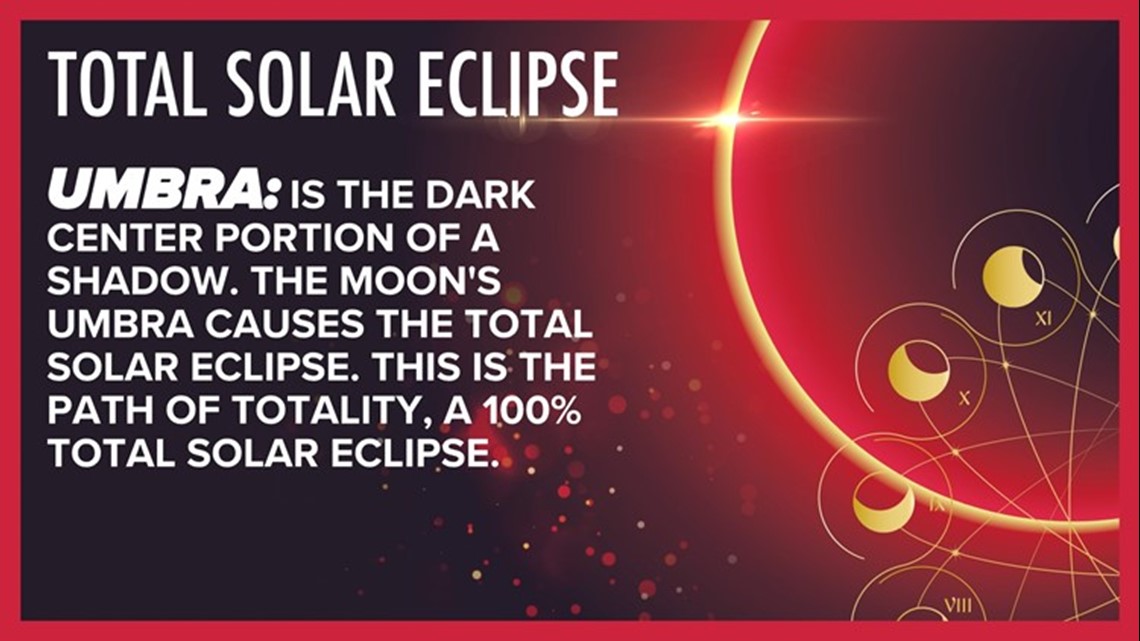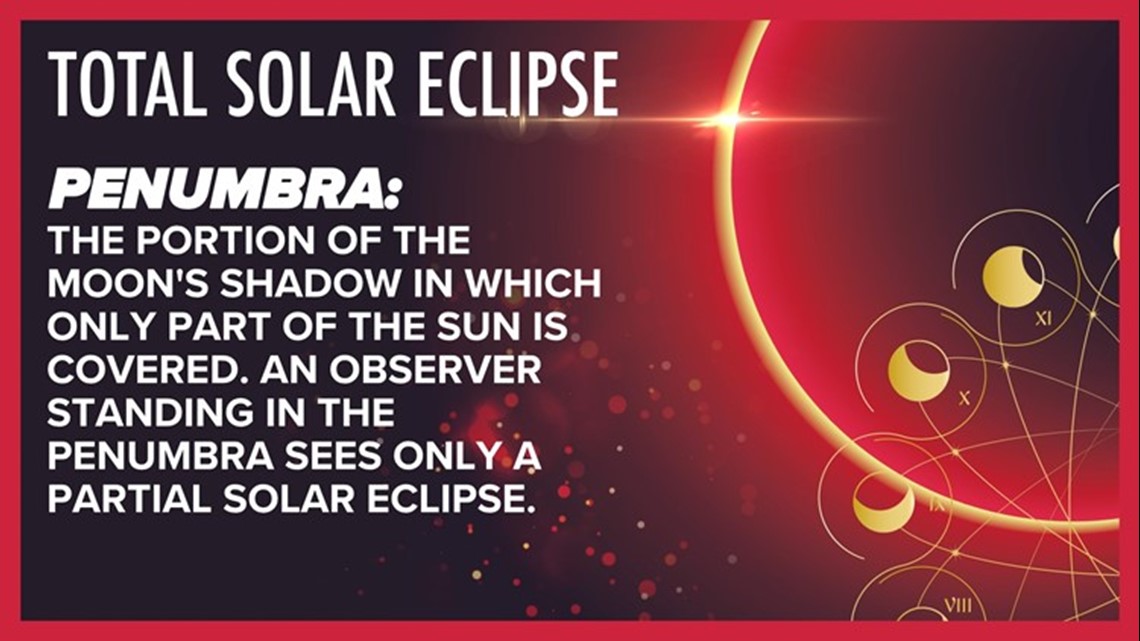TOLEDO, Ohio — The April 8 total solar eclipse is fast approaching. Many of us are preparing -- getting special eclipse-viewing glasses, welcoming friends from out of town and planning to hit one of the many eclipse-viewing parties or other special events that day.
But what exactly happens during a solar eclipse? What can we all expect to see and experience?
A total solar eclipse occurs when the moon passes between the sun and Earth, completely blocking the face of the sun. Since the Earth and the moon are moving, the path of totality moves across our planet at around 1,400 miles per hour.
During a solar eclipse, the sky will darken as if it were dawn or dusk. At the moment of totality you will be able to gaze at the fully eclipsed sun for a once-in-a-lifetime view of the solar corona.
The last total solar eclipse in the contiguous United States happened on Aug. 21, 2017. It was visible in a narrow track spanning across the United States. This phenomenon sent tens of millions of Americans flocking to the path of totality that stretched from the west to east coasts. In much of Ohio, this event was witnessed as a partial eclipse.
Although the 2017 solar eclipse provided an interesting spectacle for Ohioans, it will pale in comparison to the eclipse visible from our area in April.
What does a total solar eclipse look like?
The few select minutes of totality will be a once-in-a-lifetime experience. The sky will darken as if it were early dawn or late dusk. Star and planets may be visible. Most importantly, this time in totality will be your one and only chance to view the sun's corona. This is just one of many reasons to get excited for April 8.


How to safely view the eclipse
Looking directly at the sun with the naked eye, through a camera lens, binoculars or a telescope without a special-purpose filter secured over your eyes will instantly cause severe eye injury, including blindness. Additionally, sunglasses are not safe to view the sun through. You also must not view the sun through a camera lens, binoculars or telescope without a special filter, even while wearing solar eclipse glasses.
According to NASA's webpage on solar eclipse safety, safe solar viewers are thousands of times darker than standard sunglasses and should comply with the ISO 12312-2 international standard. There is no specific NASA-endorsed solar eclipse viewer brand.
Read more about solar eclipse safety from NASA here.


More on WTOL:

